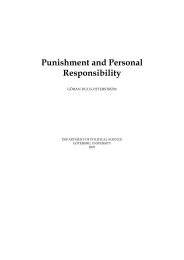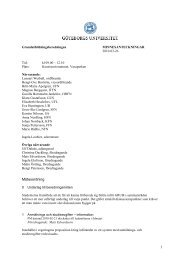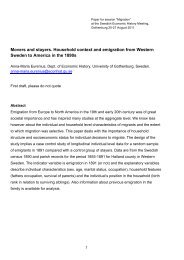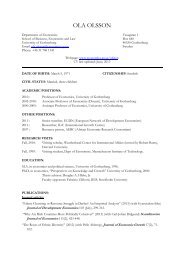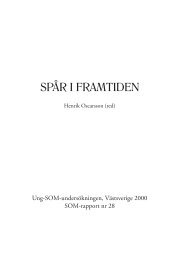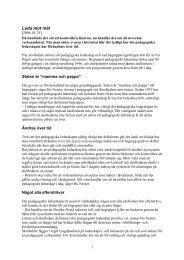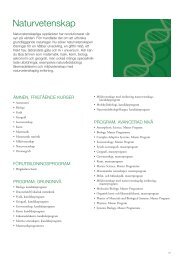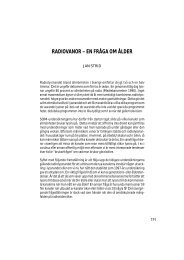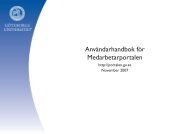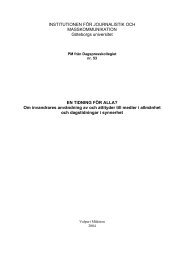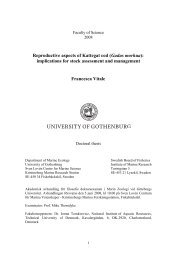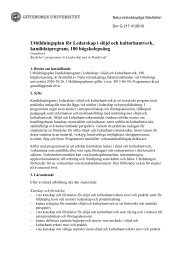Power SYBR Green PCR Master Mix and RT-PCR Protocol (PN ...
Power SYBR Green PCR Master Mix and RT-PCR Protocol (PN ...
Power SYBR Green PCR Master Mix and RT-PCR Protocol (PN ...
You also want an ePaper? Increase the reach of your titles
YUMPU automatically turns print PDFs into web optimized ePapers that Google loves.
Chapter 1<br />
Introduction<br />
Optional Use of<br />
AmpErase UNG<br />
AmpErase uracil-N-glycosylase (UNG) treatment can be useful in<br />
preventing the reamplification of carryover <strong>PCR</strong> products. The <strong>Power</strong><br />
<strong>SYBR</strong> <strong>Green</strong> <strong>PCR</strong> <strong>Master</strong> <strong>Mix</strong> contains a dUTP/dTTP ratio<br />
optimized for use with UNG. If <strong>PCR</strong> carryover contamination is<br />
suspected, UNG should be used to troubleshoot the problem. UNG<br />
can be purchased individually from Applied Biosystems<br />
(<strong>PN</strong> N808-0096).<br />
Fluorescent<br />
Contaminants<br />
Prevention of<br />
<strong>PCR</strong> Product<br />
Carryover<br />
Since fluorescent contaminants can interfere with <strong>SYBR</strong> <strong>Green</strong> I Dye<br />
assays <strong>and</strong> give false-positive results, it may be necessary to include a<br />
No Amplification Control (NAC) tube that contains sample, but no<br />
enzyme. If the absolute fluorescence of the NAC is greater than that<br />
of the No Template Control (NTC) after <strong>PCR</strong>, fluorescent<br />
contaminants may be present in the sample or in the heat block of the<br />
thermal cycler.<br />
Use primers that contain dA nucleotides near the 3´ ends so that any<br />
primer-dimer generated is efficiently degraded by AmpErase UNG at<br />
least as well as any dU-containing <strong>PCR</strong> products. The farther a dA<br />
nucleotide is from the 3´ end, the more likely partially degraded<br />
primer-dimer molecules may serve as templates for a subsequent<br />
<strong>PCR</strong> amplification.<br />
Production of primer dimer could lower the amplification yield of the<br />
desired target region. If primers cannot be selected with dA<br />
nucleotides near the ends, consider using primers with 3´ terminal<br />
dU-nucleotides. Single-str<strong>and</strong>ed DNA with terminal dU nucleotides<br />
are not substrates for AmpErase UNG (Delort et al., 1985) <strong>and</strong> thus<br />
the primers will not be degraded. Biotin-dUMP derivatives are not<br />
substrates for AmpErase UNG.<br />
The concentration of AmpErase UNG <strong>and</strong> the time of the incubation<br />
step necessary to prevent amplification of contaminating dUcontaining<br />
<strong>PCR</strong> product depend on the <strong>PCR</strong> conditions necessary to<br />
amplify your particular DNA sequence <strong>and</strong> the level of<br />
contamination expected. In most cases, using AmpErase UNG at<br />
1 U/l00 µL reaction <strong>and</strong> incubation at 50 °C for two minutes is<br />
sufficient.<br />
Do not attempt to use AmpErase UNG in subsequent amplification<br />
of dU-containing <strong>PCR</strong> template, such as in nested-<strong>PCR</strong> protocols.<br />
The UNG will degrade the dU-containing <strong>PCR</strong> product, preventing<br />
further amplification.<br />
1-10 <strong>Power</strong> <strong>SYBR</strong><br />
DRAFT<br />
® <strong>Green</strong> <strong>PCR</strong> <strong>Master</strong> <strong>Mix</strong> <strong>Protocol</strong><br />
September 29, 2005 1:41 pm, 1_Chapter.fm




